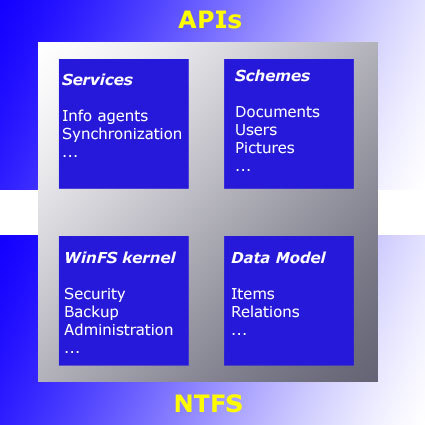WinFS: Microsoft's Data Management Vision
Introduction
Over the past year, Microsoft has managed to create a perfect smokescreen around its new WinFS file system. It has spent this time touting a new, database-supported filing system to replace NTFS and FAT. Compatibility doubts were not long in bubbling to the surface. During the PDC (Professional Developers Conference) held in Los Angeles at the end of October, we spoke with Microsoft brass to gain an exclusive insight into the planned technological advance.
NTFS Holds On Into Longhorn
NTFS forms the basis for WinFS. Communication between WinFS and NTFS is controlled by the WinFS core, which also provides administrative and security-related functions as well as interacting with services, schemes and data models.
Based on this, Microsoft will not be building an entirely new file system after all. Windows Future Storage is integrated into Longhorn as a modular extension to file management. This highly complex indexing technology is based on a relational database. The main requirement is still the use of NTFS, however. It is less prone to error than FAT32 and can cope with data volumes in the teraBytes. The task of physically managing and incorporating files remains in the hands of NTFS. In layman's terms, WinFS mirrors folders and files, enabling it to speed up searches and retrieval of these data based on suitable XML parameters and, above all, according to variable criteria. That said, anyone who installs Longhorn on a FAT32 partition will not experience the joy of futuristic file administration, but nor will they suffer any noticeable loss of functionality.
That is a reasonable compromise between the technological possibilities and the requirements of millions of developers and users throughout the world who feared incompatibility between the old and new systems. Longhorn will thus be able to run older applications, too. Having several operating systems on one hard drive continues to be an option. Common data access by Linux and Longhorn on a common partition is also possible - admittedly without WinFS. To enable Linux to load Windows data in the first place, the Microsoft system should be booted from a FAT partition.
Technologically, Longhorn is in any case not entrenched in WinFS. The OS works just as well on FAT32 volumes. Conversely, WinFS can be used in other systems, too, for example, in Microsoft's upcoming server generations. Implementation in Windows XP is also feasible, given that virtually all the necessary system interfaces (APIs) exist in XP. Microsoft may be crafting a wholly new WIN32 environment called WinFx, but also promises seamless downward compatibility.
Get Tom's Hardware's best news and in-depth reviews, straight to your inbox.
